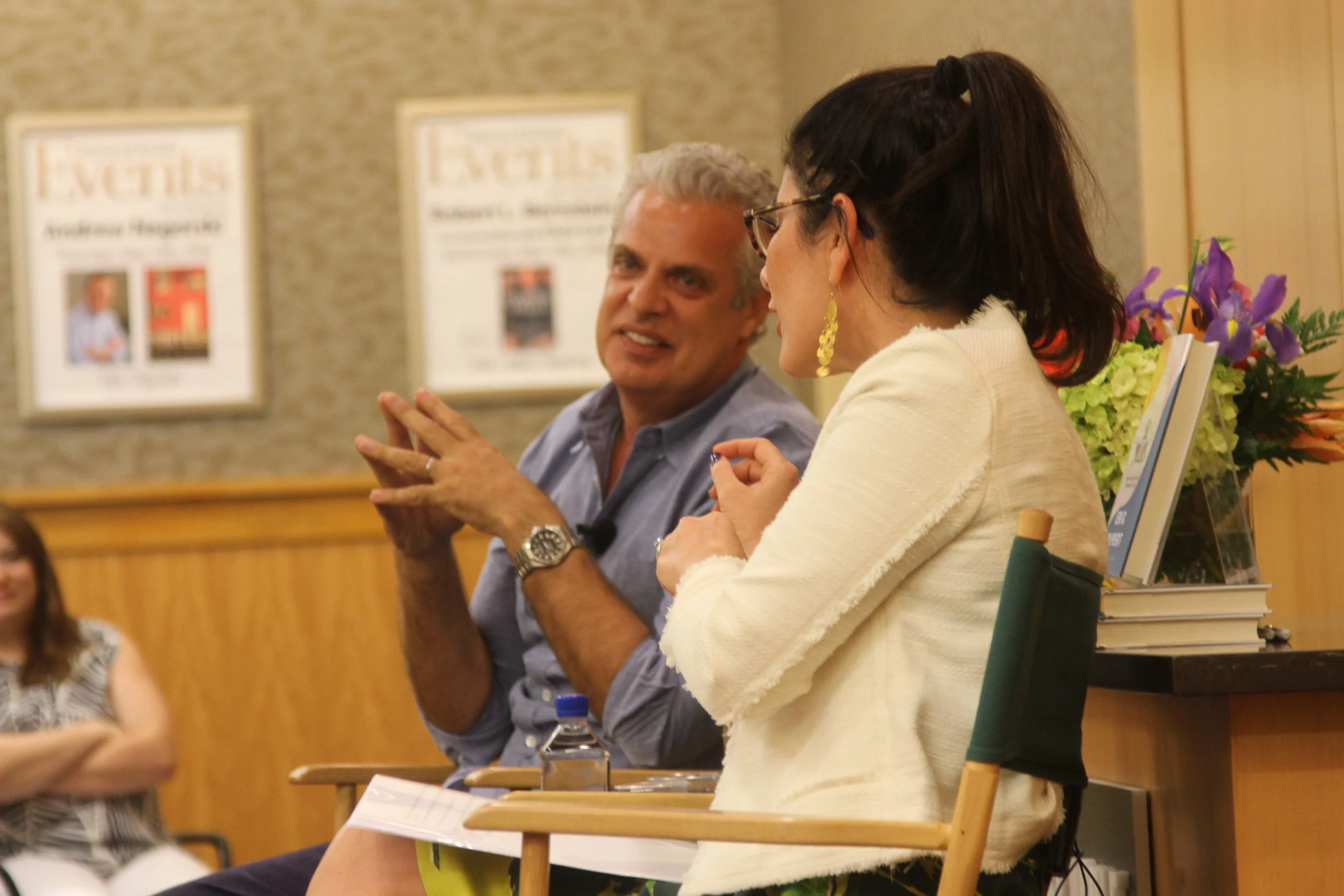Jane Ziegelman & Andrew Coe @ Tenement Museum
Last Wednesday, Jane Ziegelman and Andrew Coe, authors of A Square Meal: A Culinary History of the Great Depression, spoke about food traditions of the era at the Lower East Side Tenement Museum. The conversation was joined by Mitchell Davis of the James Beard Foundation. Davis had originally met the authors in the course of working on a book about foie gras, “the opposite of what we’ll be talking about today.” Here’s what I learned from them:
The start of the Great Depression was murky – “people didn’t know that they were in it. Every spring there was an expectation that the economy would snap back, and that had enormous implications for how people got fed.”
Since the 19th century, bread lines had been present on New York City’s Bowery. They came out of hobo culture and were intended to feed itinerant farm workers during the cold months, but as the Depression started, more and more families began to use them as a regular food source. They started to appear in unexpected areas, for example, 5th Avenue. Shopkeepers protested but lost, and the numbers crept upward to as many as 82 during the winter of 1930-31.
However, the breadlines were a piecemeal, haphazard system for feeding the hungry – sponsored by individual charities, groups, and institutions, none coordinating with the others. Why wasn’t there a more robust, experienced system to distribute food aid? The short answer is that United States culture hadn’t allowed for anything like a welfare system or safety net, up until then. To be an unemployed able-bodied man was considered a moral failing, not something the government or taxpayers should have to help with. It was hard to believe that the middle class in a place like New York City could go hungry, and people hard a hard time wrapping their minds around the need. We had no tradition of cucina povera, as Europeans did – America was supposed to be the solution to those Old World problems.
Davis and Ziegelman
New York City was the first in the nation to say, “we have to help.” Mayor Jimmy Walker thought the breadlines were bad for business, and the city was a hotbed for social workers who thought they could do better. Walker enlisted all of the city agencies to start producing food boxes, identifying families who needed them, and distributing them. Eventually, New York State Governor Franklin Delano Roosevelt founded the Temporary Emergency Relief Administration, a radical early welfare program that helped to normalize the idea of “food charity.” This would eventually become FERA when he was elected president, and would point the way toward the New Deal. Slowly but surely, people got fed.
But what were they eating? The Depression erased the last vestiges of 19th century food culture in America. Nutritional science had been around since the early 1900’s, with studies almost exclusively aimed at eradicating malnutrition among the lower classes. The hop was to ease the discontent of poor people by figuring out what essential nutrients they could focus their limited food budgets on and still raise healthy children. By the time the Depression took hold, people were desperate for information like this, and a generation of home economists, really food warriors and political crusaders, were happy to help them. Utilitarian and straightforward, their food was “a cuisine looking for an emergency,” and the Depression provided a big one.
Much of the food was not what we would consider “good” today. One recipe that the authors found was for a dish of wheat berries cooked with tomatoes and canned salmon. But good taste was beside the point – each ingredient would add up into a full nutritional whole, and that made it a proper Depression meal. In the hierarchy of nutrients, price, and flavor, flavor was a distant third priority.
This thinking led to the beginning of what we think of as 50’s cuisine. The home ecs were trying to build a way of eating that was based on science, and the government was trying to build a food infrastructure. Appliances, refrigeration and out of season produce became more available. School lunches became essential ways to keep children fed, as well as to assimilate immigrant generations. It’s interesting that what we might think of today as culinary abomination had its roots in people trying to solve real, and deadly, issues. Provided for tasting at the event were two dishes that the authors liked – a lima bean loaf, “a cousin of the falafel,” and liver balls.*
lima loaf and liver balls, oh my!
You could also call this food moment the beginning of fusion food. Immigrant families had to learn to make do with what ingredients they got, which were often unfamiliar to them – like American cheese for the Italians. While there was some effort to make sure groups of people got food they could use it didn’t always work out – for example, Jewish families were given matzo, but also salt pork. Luckily in a crowded place like NYC, families could trade with their neighbors.
As the Depression ended and Americans began gearing up for war instead, traditions changed and more food became widely available. Soldiers coming home had been exposed to European ways of eating, and brought home new ideas. Everyone wanted to move on. But the home ec Depression style of cooking lives on in our culture, influencing what we eat in hospitals, schools, and other large establishments. More importantly, many Americans now understand the need for a social safety net and welfare programs. Let’s hope we keep this history in mind as we look toward the future of our institutions.
* 97 Orchard, also by Jane Ziegelman, contains 40 recipes stretching from 1863-1935. I don’t know if it includes these but if recipes from New York City’s history interest you, it’s a highly recommended read.








